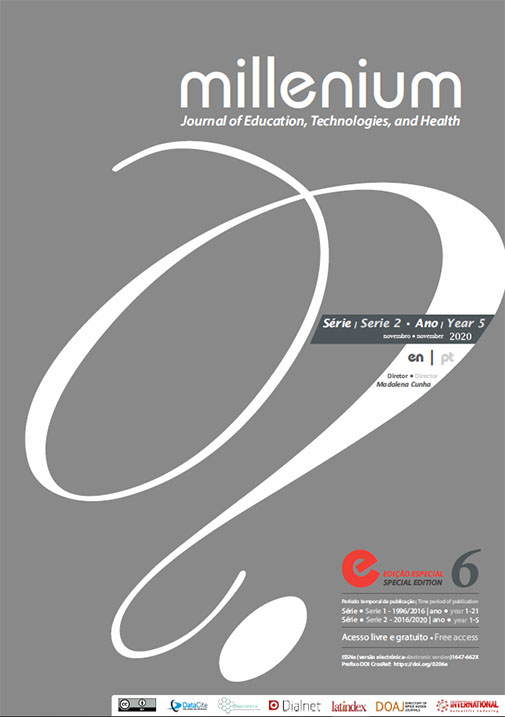Avaliação do ciclo de vida
resenha histórica e perspetiva futura
DOI:
https://doi.org/10.29352/mill0206e.06.00315Palavras-chave:
avaliação do ciclo de vida, análise do ciclo de vida, ambiente, recursos, energiaResumo
Introdução: Este artigo apresenta uma resenha histórica e perspetiva futura da avaliação do ciclo de vida (ACV), como ferramenta de avaliação ambiental dos produtos.
Os primeiros estudos ACV, designados REPA (Resourse and Environmental Profile Analysis), foram realizados nos Estados Unidos da América (EUA) no início da década de 70 do século passado e tiveram como principal motivação os aspetos relacionados com as implicações ambientais e o consumo de recursos utilizados na produção das embalagens. Só em meados dos anos 80 é que estes estudos começaram a ser realizados na Europa através do Laboratório Federal Suíço para Teste e Investigação de Materiais (EMPA).
Desenvolvimento: Na década de 90 houve um notável crescimento das atividades ACV na Europa e nos EUA, nomeadamente ao nível da harmonização dos métodos ACV e das atividades de normalização levadas a cabo, respetivamente, pela SETAC (Society of Environmental Toxicology and Chemistry) e ISO (International Organization for Standardization).
A partir do ano 2000 foram inúmeras as organizações internacionais e regionais criadas, com o objetivo de melhorar a credibilidade, aceitação e prática da ACV assim como foram muitas as ferramentas informáticas (software e bases de dados) desenvolvidas de apoio aos estudos ACV.
Conclusões: Um dos principais desafios futuros da ACV é a sua maior integração com as outras abordagens de ciclo de vida, que entretanto foram aparecendo, à medida que os estudos ACV iam sendo cada vez mais bem elaborados.
Downloads
Referências
Ahbe, S., Braunschweig, A., Müller-Wenk, R. (1991). Methodologie des Ecobilans sur la base de l’optimisation écologique. Em l’Office fédéral de l’environnement, des forêts et du paysage (OFEFP) (Eds.). Cahier de l’environement, 133. Berne.
Bare J, Norris G, Pennington D, McKone T (2003). TRACI – The Tool for the Reduction and Assessment of Chemical and other environmental Impacts. Journal of Industrial Ecology, 6(3), 49-78.
Estevan, H. and Schaefer, B. (2017). Life Cycle Costing State of the art report. SPP Regions (Sustainable Public Procurement Regions) Project Consortium. ICLEI – Local Governments for Sustainability, European Secretariat.
EC (2016). European Platform on Life Cycle Assessment. European Commission Environment. Accessed in: http://ec.europa.eu/ environment/ipp/lca.htm.
Fink, P. (1997). The Roots of LCA in Switzerland: Continuous Learning by Doing. Int. J. LCA, vol. 2 (3) 131-134. Landsberg, Germany: Ecomed.
Gabathuler, H. (1997). The CML Story: How Environmental Sciences Entered the Debate on LCA. Int. J. LCA, vol. 2 (4) 187-194. Landsberg, Germany: Ecomed.
Guinée, J. (1995). Development of a Methodology for the Environmental Life-Cycle Assessment of Products (with a case study on margarines). Ph. D. thesis. Leiden University, Leiden.
Heijungs, R. and Guinée, J. (2012). An Overview of the Life Cycle Assessment Method—Past, Present, and Future. In: Curran, M.A. (Ed.), Life Cycle Assessment Handbook: A Guide for Environmentally Sustainable Products, pp. 15–42. Beverly: Scrivener Publishing.
Hindle, P. and Oude, N. (1996). SPOLD - Society for the Promotion of Life Cycle Development. Int. J. LCA 1 (1) 55-56. ecomed publishers, D-86899 Landsberg, Germany.
Hollerud and Bowyer, J. (2017). A Review of Life Cycle Assessment Tools. Dovetail Partners. Accessed in: http://www.dovetailinc.org/dovetaillcatools 0217.pdf
Hunt, R. and Franklin, E. (1996). LCA - How it Came About. Personal Reflections on the Origin and the Development of LCA in the USA. Int. J. LCA, vol. 1 (1) 4-7. Landsberg, Germany: Ecomed.
OFEFP (1984). Bilan Écologique des Matériaux D'emballage. Office Fédéral de L'environnment, des Forêts et du Paysage. Cahiers de l'environnment, 24. Berne.
Reed, D. (2012). Life-Cycle Assessment in Government Policy in the United States. PhD diss., University of Tennessee. Accessed in: https://trace.tennessee. edu/utk_graddiss/1394
Sala, S., Vasta, A., Mancini, L., Dewulf, J., Rosenbaum, E. (2015). Social Life Cycle Assessment - State of the art and challenges for supporting product policies; EUR 27624 EN; doi:10.2788/253715
SETAC (1991). A Technical Framework for Life-Cycle Assessment. Em Fava, J., Denison, R., Jones, B., Curran, M., Vigon, B., Selke, S. e Barnum, J. (Eds.). Workshop report from the Smugglers Notch. Society of Environmental Toxicology and Chemistry, Vermont, USA.
SETAC (1993). Guidelines for Life-Cycle Assessment: A “Code of Practice”. Em Consoli, F., Allen, D., Boustead, I., Fava, J., Franklin, W., Jensen, A., Oude, N., Parrish, R., Perriman, R., Postlethwaite, D., Quay, B., Séguin, J., e Vigon B. (Eds.). Society of Environmental Toxicology and Chemistry, Sesimbra: Portugal.
Tibor, T. and Feldman, I. (1996). ISO 14000: A Guide to the New Environmental Management Standards. USA: Times Mirror Higher Education Group.
UNEP/SETAC (2009). Guidelines for Social Life Cycle Assessment of Products, UNEP/SETAC Life Cycle Initiative, Paris. Accessed in: www.unep.fr/shared/ publications/pdf/ DTIx1164xPA-guidelines_sLCA.pdf.
UNEP/SETAC (2011). Towards a Life Cycle Sustainability Assessment: Making informed choices on products, UNEP/SETAC Life Cycle Initiative, Paris. Accessed in: https://www.lifecycleinitiative.org/wp-content/ uploads/ 2012/12/2011%20-%20Towards%20LCSA.pdf
UNEP/SETAC (2012). Greening the Economy Through Life Cycle Thinking, UNEP/SETAC Life Cycle Initiative, Paris. Accessed in: https://www.lifecycleinitiative. org/wpcontent/uploads/2013/03/2012LCI_10_years_28 .3.13.pdf
UNEP/SETAC (2015). Vibrant Communities and Sustainable Value Chains. A Life Cycle Management Capability Framework for Business. UNEP/SETAC Life Cycle Initiative, Paris. Accessed in: https://www.lifecycleinitiative.org/wp-content/uploads/2015/11/LCM-CMM-Workbook-24.10.2015.pdf
Downloads
Publicado
Como Citar
Edição
Secção
Licença
Os autores que submetem propostas para esta revista concordam com os seguintes termos:
a) Os artigos são publicados segundo a licença Licença Creative Commons (CC BY 4.0), conformando regime open-access, sem qualquer custo para o autor ou para o leitor;
b) Os autores conservam os direitos de autor e concedem à revista o direito de primeira publicação, permitindo-se a partilha livre do trabalho, desde que seja corretamente atribuída a autoria e publicação inicial nesta revista.
c) Os autores têm autorização para assumir contratos adicionais separadamente, para distribuição não-exclusiva da versão do trabalho publicada nesta revista (ex.: publicar em repositório institucional ou como capítulo de livro), com reconhecimento de autoria e publicação inicial nesta revista.
d) Os autores têm permissão e são estimulados a publicar e distribuir o seu trabalho online (ex.: em repositórios institucionais ou na sua página pessoal) já que isso pode gerar alterações produtivas, bem como aumentar o impacto e a citação do trabalho publica
Documentos necessários à submissão
Template do artigo (formato editável)





